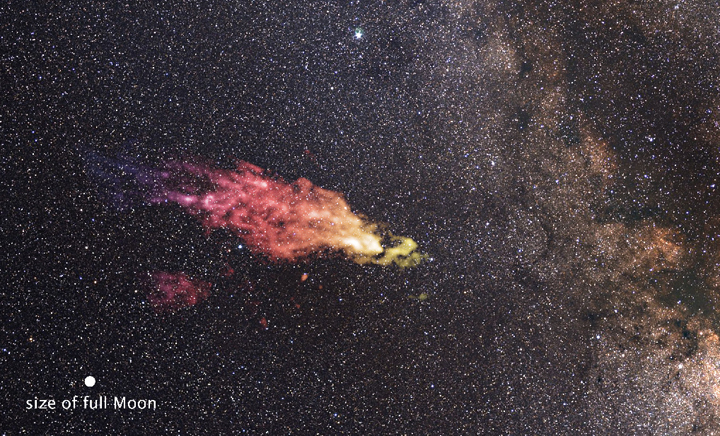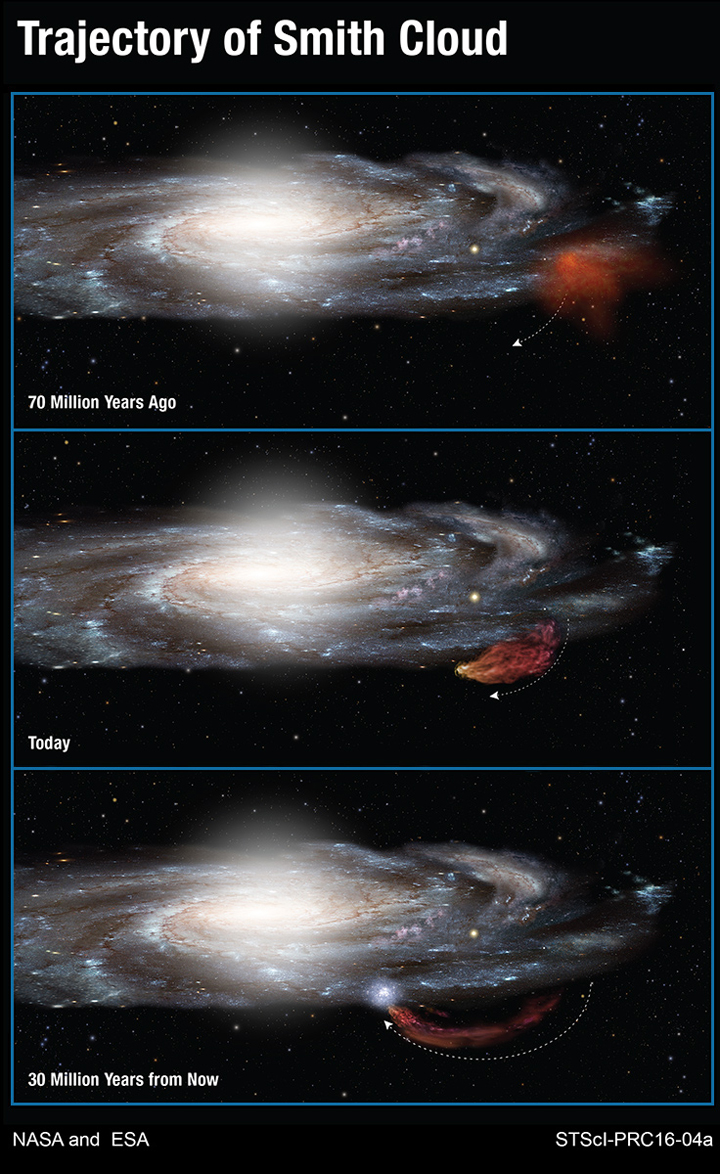A huge cloud of hydrogen gas that was expelled from the formation of our galaxy is on its way back.

Astronomers using NASA’s Hubble Space Telescope have calculated that a cloud of hydrogen gas at the outskirts of our galaxy is speeding back towards us at a more than 1.1 million km/h.
It’s known that there are hundreds of similar high-velocity clouds at the outer reaches of our galaxy, but this cloud — called the “Smith Cloud — is special: astronomers know its trajectory quite well.
Though these clouds are considered speedy, there’s no chance we’ll get to see the results of the collision: it’s expected to slam into the Milky Way in about 30 million years.
But the consequences will be spectacular: it’s believed that the gas will begin an incredible star formation in the region perhaps providing enough gas to create two million suns.
“The cloud is an example of how the galaxy is changing with time,” said team leader Andrew Fox of the Space Telescope Science Institute. “It’s telling us that the Milky Way is a bubbling, very active place where gas can be thrown out of one part of the disk and then return back down into another.”

Get daily National news
So what is this Smith Cloud?
The cloud was named after Gail Smith who detected the radio waves (the gas is invisible to the human eye) in the early 1960s.
While it’s unknown exactly what the cloud is, there are some theories: it could be a failed galaxy or interstellar gas.





Comments